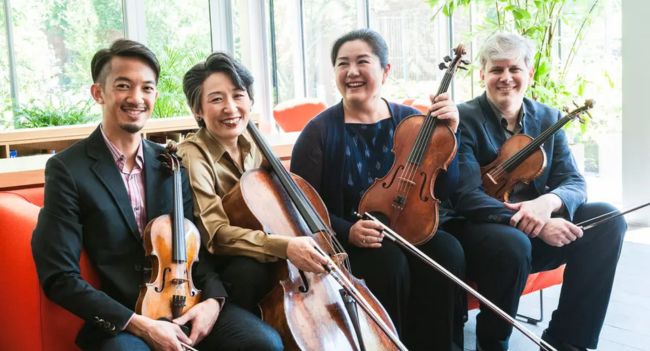And yet Bach’s DNA twists through the masterpieces of the quartet repertoire and profoundly shaped works by composers including Beethoven, Mendelssohn and Bartok. Schumann considered Bach fugues his “daily bread.”
On its most recent album, the Borromeo String Quartet goes back to the source with a transcription of the first book of Bach’s “The Well-Tempered Clavier,” originally for keyboard solo, by one of the ensemble’s violinists, Nicholas Kitchen. On Friday the group presents preludes and fugues from this collection at Carnegie Hall alongside works by Mendelssohn, Schumann and Sebastian Currier that have Bachian affinities.
In a phone interview, Mr. Kitchen spoke about the motivation behind the project and the importance of playing Bach as a string quartet. These are edited excerpts from the conversation.
Why did you choose “The Well-Tempered Clavier?”
Many great composers not only loved it as music, but studied it with a depth that is almost hard to fathom. Beethoven absorbed this music from memory by the time he was 12; by the end of this life he would come back to it with his own “Grosse Fugue.”
But it was the same for Chopin, for Bartok, Mendelssohn — one after the other. The pieces have such musical ingenuity. The manner of bringing tones together is not only so brilliant from a technical point of view, but in the preludes and in the fugues it’s done so movingly that composers always felt this was the perfect blend of complexity, technique and human spirit.
Did your transcription open up new insights into the music?
A lot of the fugues have three voices, so you might say, O.K., three people should play that. But when you have four people playing three voices, you get a totally different conversation.
Playing it in a quartet keeps reminding you that Bach was very sensitive to the workings of the inner voices. From a distance, it seems really smooth. But from the inside, every moment has this energy and emotion. In preparing the fugues we realized we had to encourage each other to maintain that energy on an almost atomic scale. Sometimes it feels as if you’re inside a chemical reaction.
Was anything gained — or lost — in translation from keyboard to string instruments?
As a keyboard player Bach never failed to impress his contemporaries with his ability to create singing lines. There are quite a few of the preludes, often in the minor keys, where the singing aspect of the string instruments is really evocative of the emotion within the music. I can’t help but feel like Bach the clavichord player did something similar to what we are doing.
Other pieces in the collection use this barrage of attacks to virtuoso effect. In my arrangement I did my best to divide the music in such a way among the instruments as to give it this percussive, active character that comes from the attack on the keyboard.
Has playing “The Well-Tempered Clavier” in your ensemble affected your take on Beethoven?
Beethoven is so good at creating the architecture of his music. When you come at him through the lens of the Bach fugues, it makes you naturally identify with the smallest units, of one tone against another. You just can’t help feeling that in a movement like the Cavatina of his Opus 130, where the notes make these slight changes against each other, that he encouraged himself to emulate the spirit of Bach’s exquisite counterpoint.
Some people will refer to counterpoint as something dry, but there is nothing at all dry about the way Bach ingeniously combines the voices — it’s always full of spirit or sadness or joy. Beethoven absorbed that as a child and he had to answer to that. When we delve into “The Well-Tempered Clavier,” we’re a little closer to his workshop.
